chapter 10 - muscle tissue
1/24
There's no tags or description
Looks like no tags are added yet.
Name | Mastery | Learn | Test | Matching | Spaced |
|---|
No study sessions yet.
25 Terms
3 types of muscle
skeletal - moves & positions the body
smooth - pushes fluids & solids along digestive tract & regulates artery (blood vessel) diameter
cardiac - pushes blood through circulatory system
functions of skeletal muscle
skeletal movement - pulls tendons to move bones
maintain posture & body position
support soft tissues - ex. muscles of the abdominal wall & pelvic cavity
guard entrances & exists - openings of the digestive & urinary tracts
maintain body temp
store nutrients - glucose, lipid & even muscle proteins used during fasing
roots associated with muscle
myo, mys = muscle (myoneural junction = muscle nerve junction)
sarco - flesh (Gk)
sarcolemma - cell membrane of a muscle cell
sarcoplasm - cytoplasm of a muscle cell
sarcoplasmic reticulum - modified endoplasmic reticulum of a muscle cell
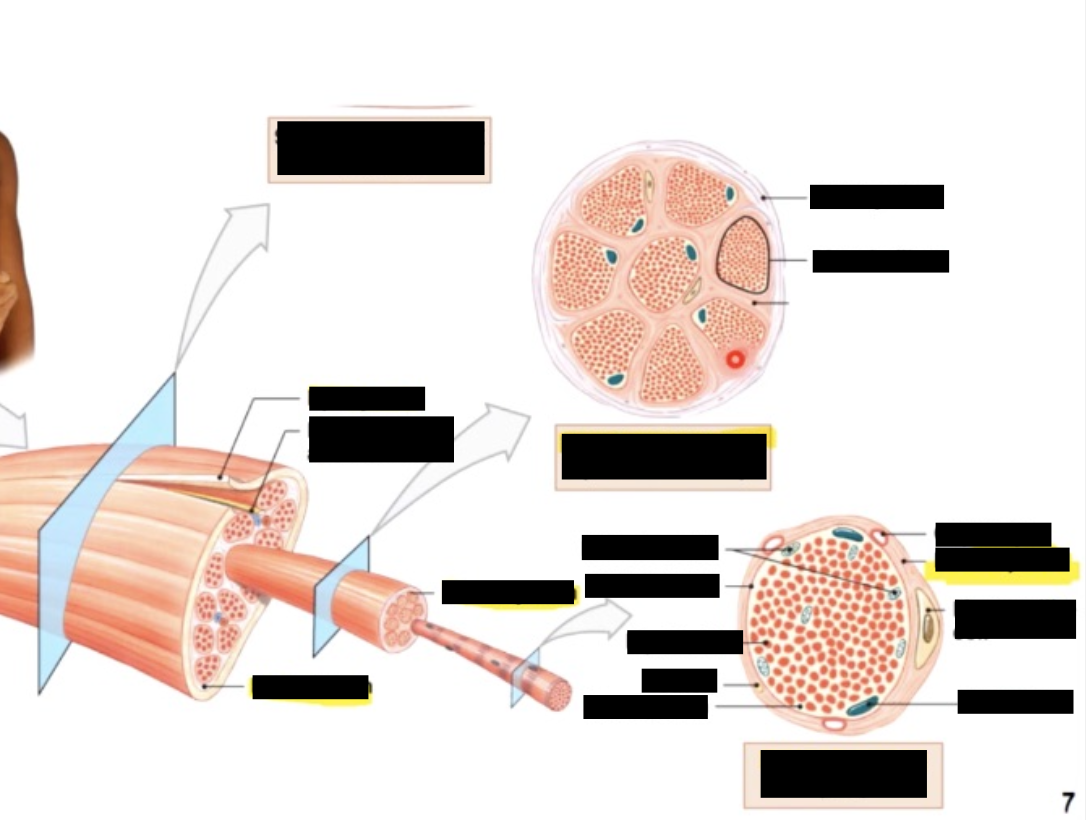
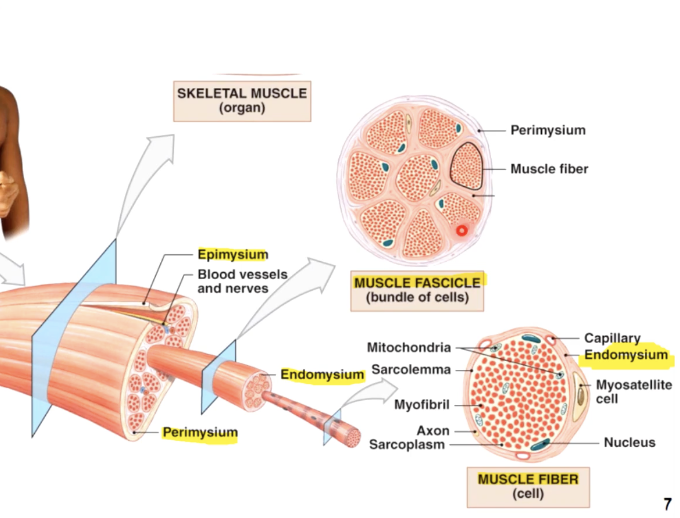


muscle tissue
muscle consists of muscle fibres (myofibers) wrapped in a connective tissue called the endomysium
a number of fibres are wrapped together in periosteum to form a fascicle, while fascicles are bundled together to form a muscle, which is wrapped in epimysium or deep fascia
the 3 connective tissue layers come together to form a tendon
Individual fibres are full of contractile organelles called myofibrils, which fill the cell and displace the nuclei to one side
Myofibrils are a systematic arrangement of proteins (myofilaments) which form the contractile unit of the muscle called a sarcomere, which give muscle its striated apperance
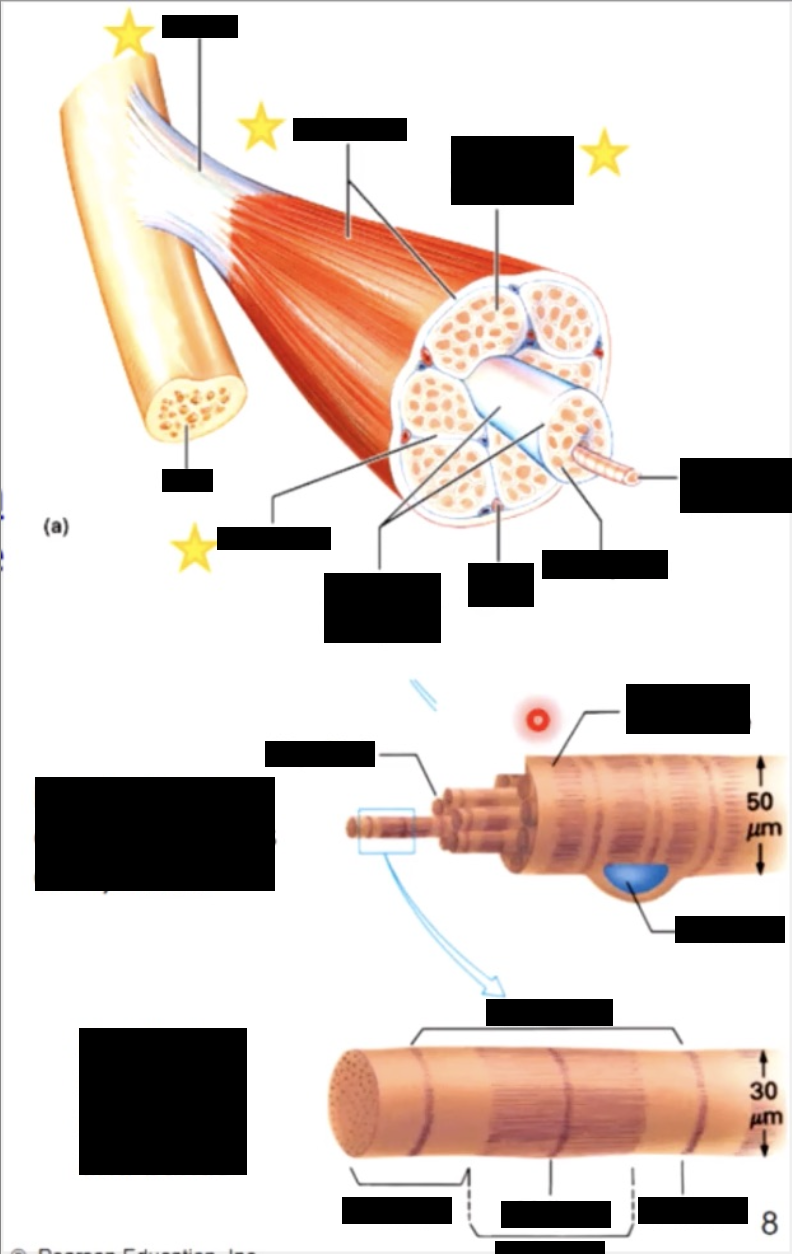
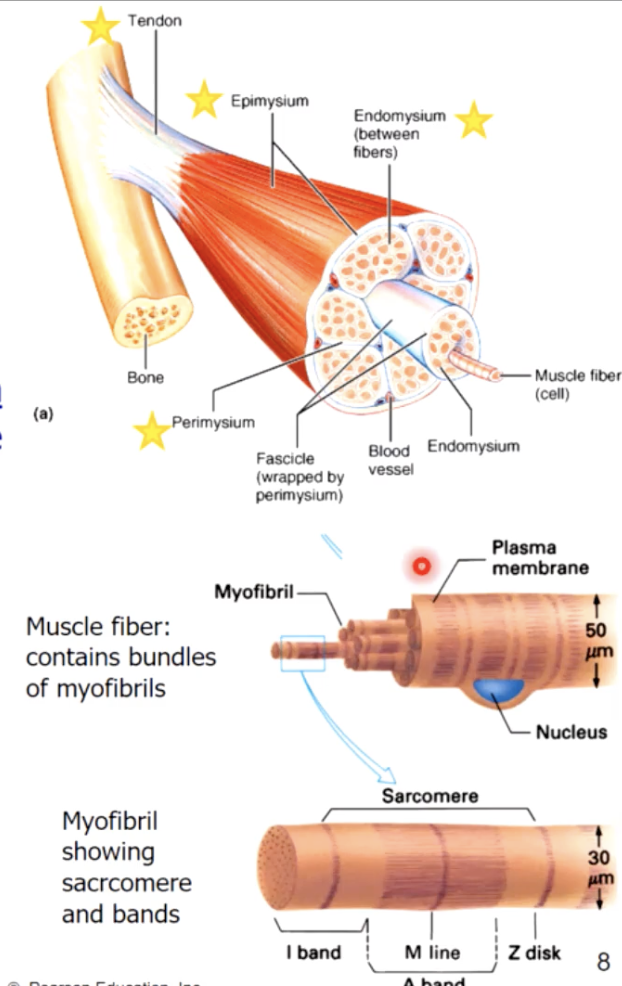
connective tissues around
whole muscle - epimysium
fascicles - perimysium
cells (myofibers) - endomysium
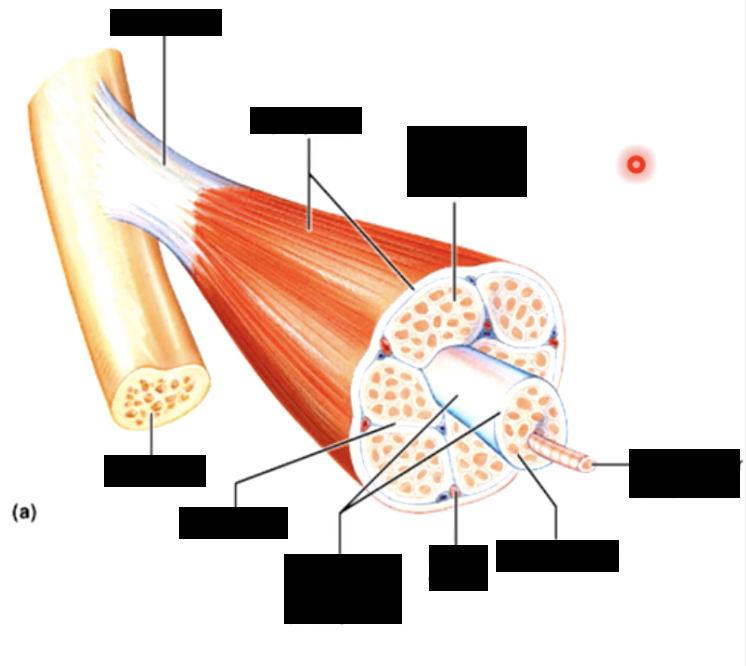
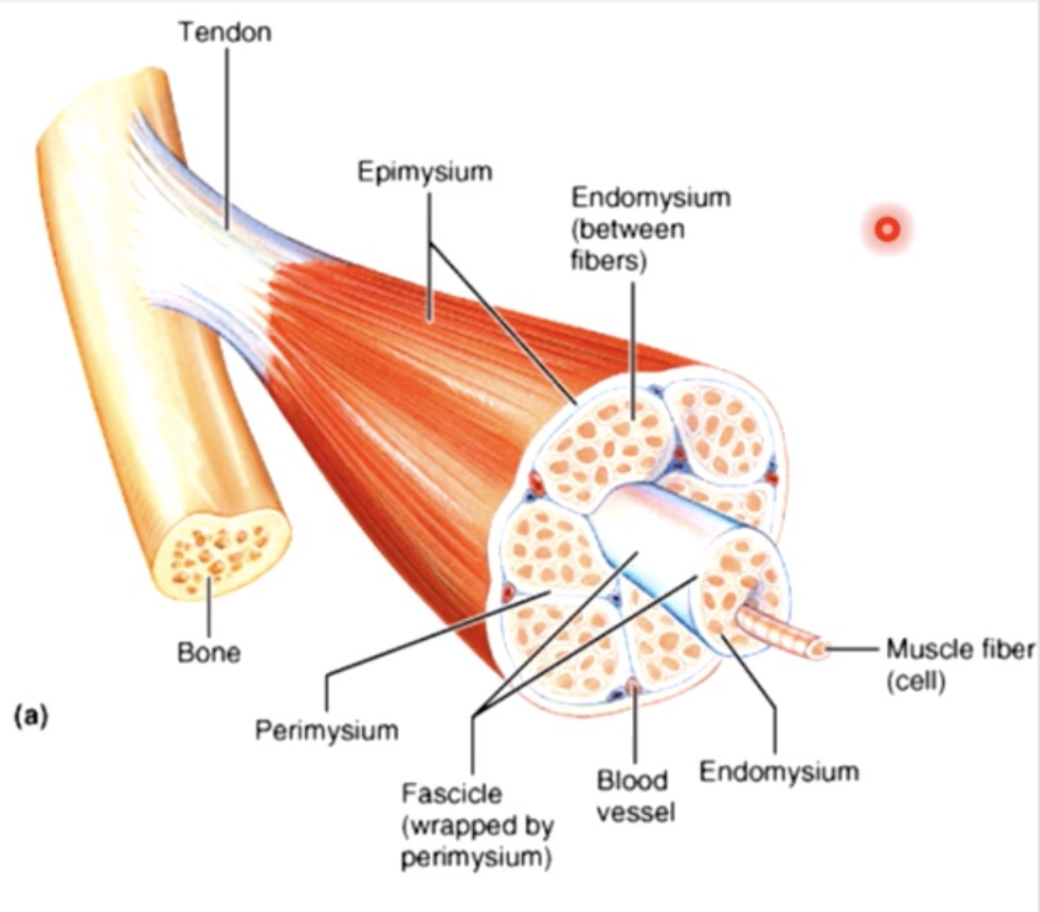
muscle attachments
the collagen fibres of 3 different connective tissue layers come together at the ends of the muscle to form tendons (bundles) or aponeuroses (sheets)
structure - tendons in turn are continuous with matrix of the bone they are attached to
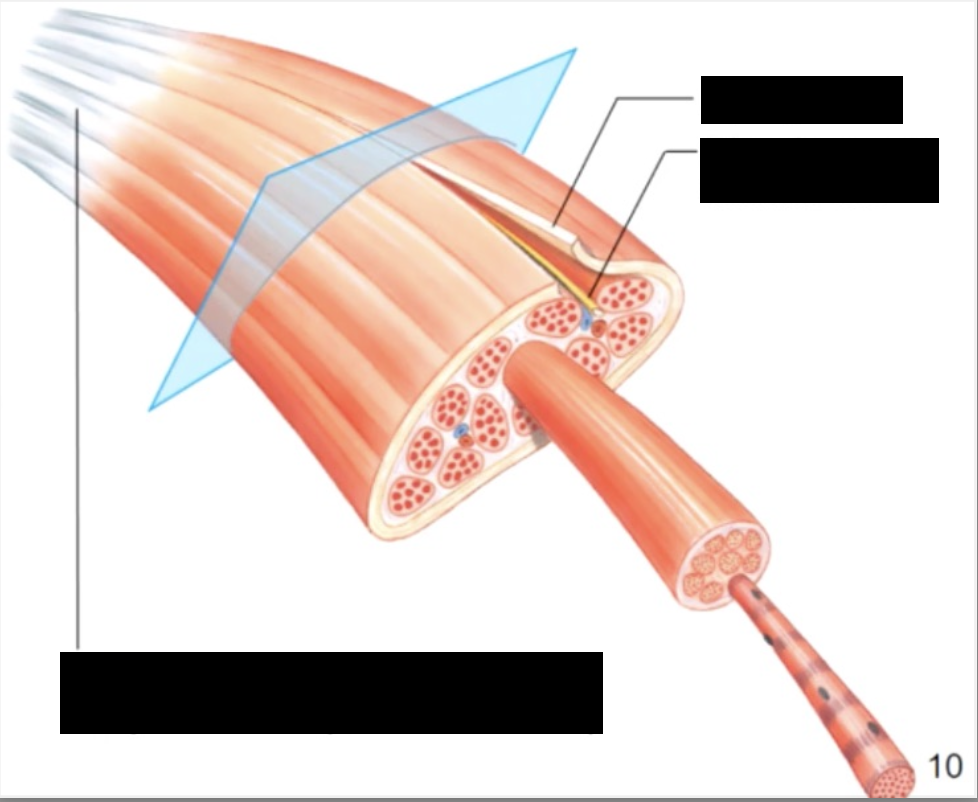

aponeuroses
plural
layers of flat broad tendons with fewer vessels & nerves
structure - typically both tendons and aponeuroses attach muscles to bones
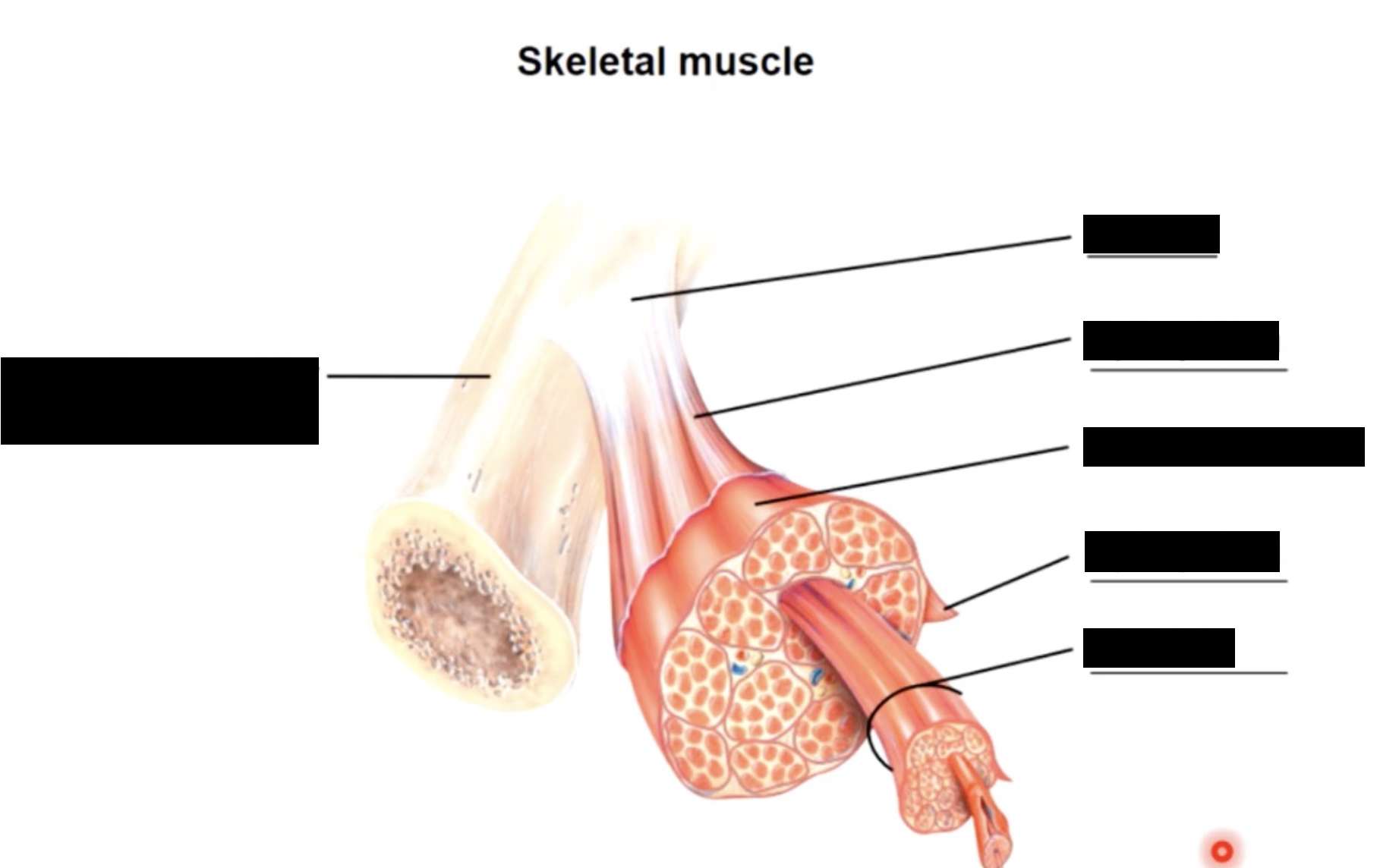
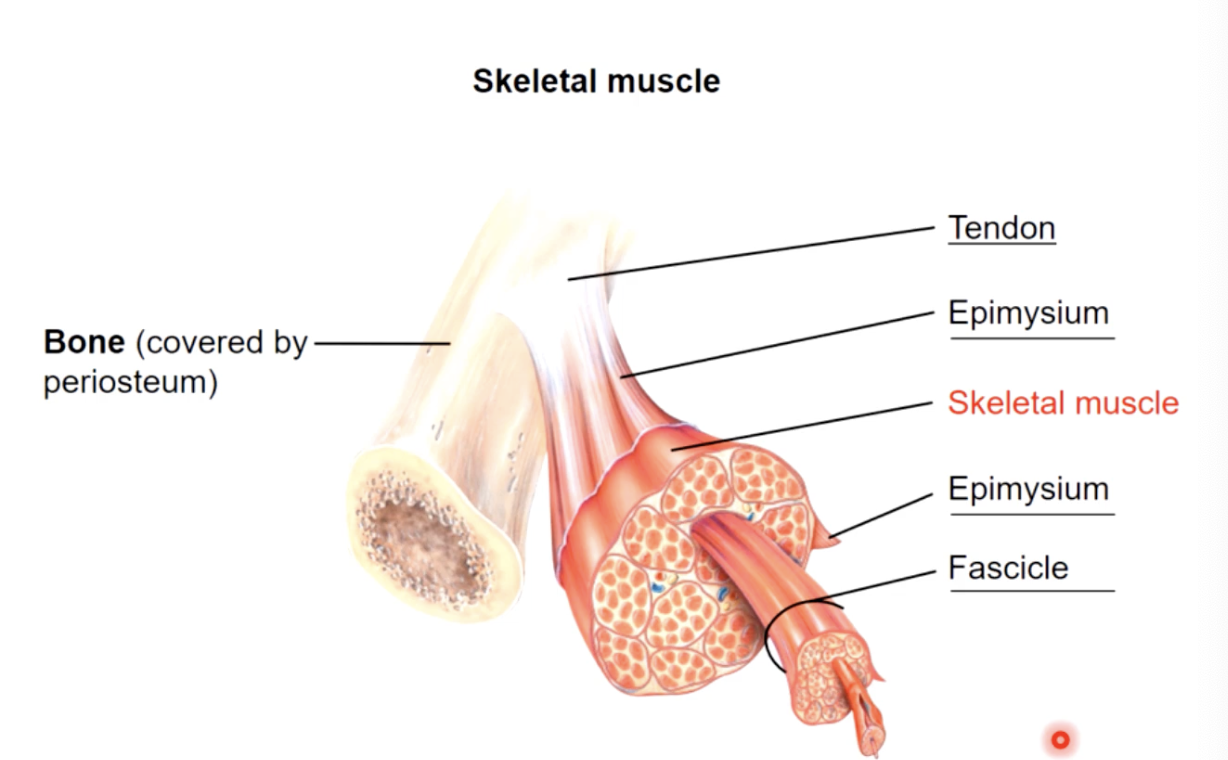
nerve and blood supply
nerve and blood vessels penetrate epimysium together and branch through perimysium and endomysium
each cell is
adjacent to capillaries
Inverted by nerve fibre axons

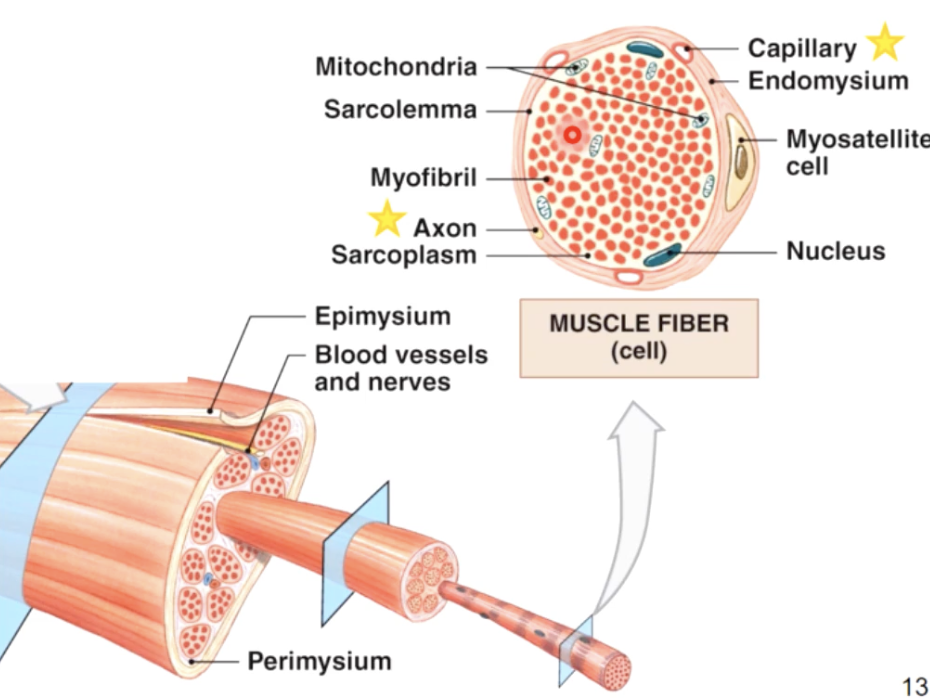
skeletal muscle is made up of..
myofibrils - a bundle of smaller rod like structures
Myofilaments - even smaller structures/proteins make up myofibrils
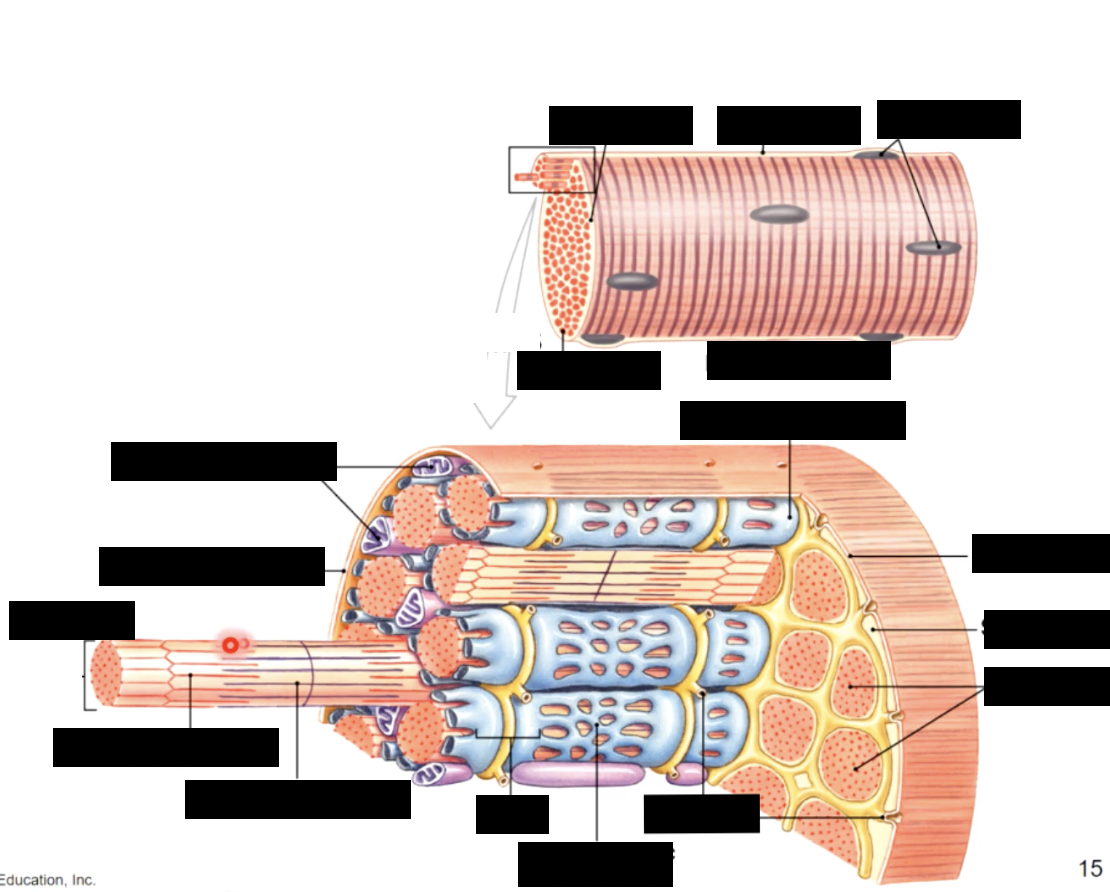
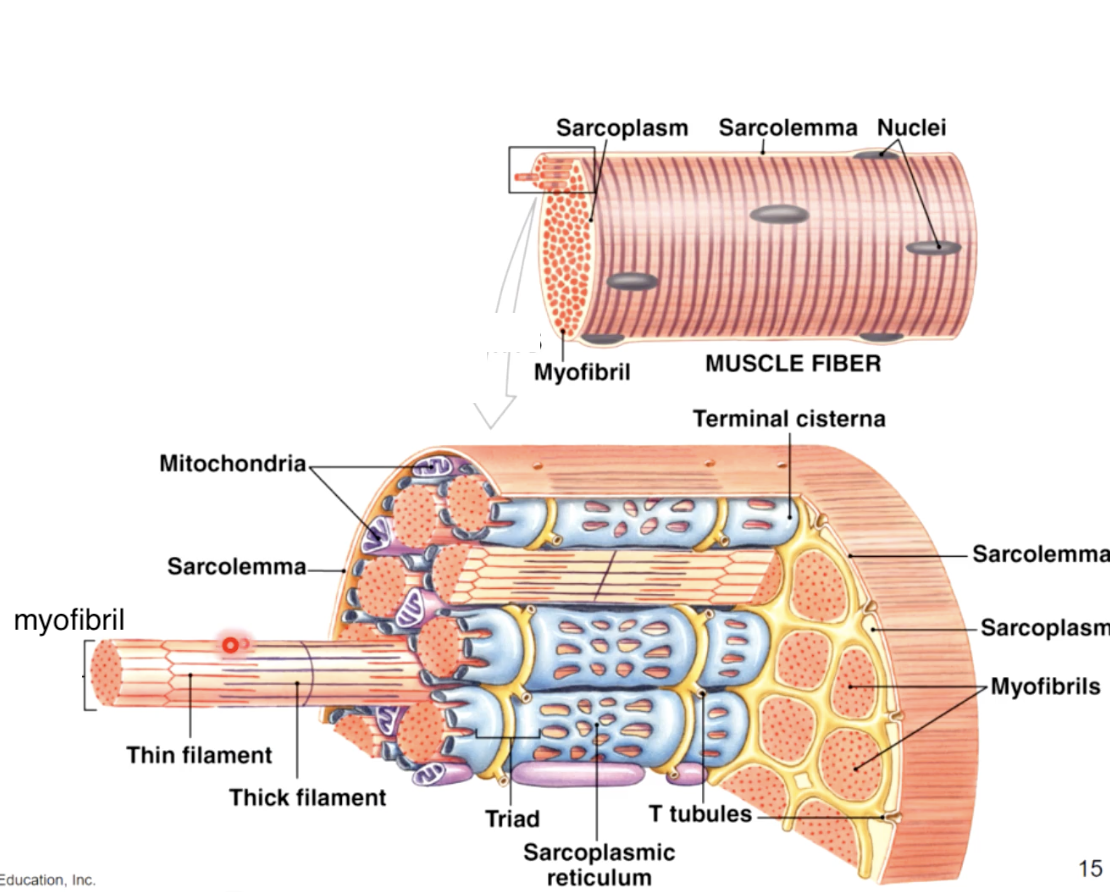
development of skeletal muscle from myoblast to maturity
1.muscle fibers develop through the fusion of ebryonic mesodermal cells called myoblasts
most myoblasts fuse to form larger multinucleate cells
a few myoblasts remain with the tissue as myosatellite cells
multinucleate cells differentiate into skeletal muscle fibers as they enlarge and begin producing the proteins involved in muscle contraction
tubules surrounding the myofibrils
tiny tubules called transverse tubules or T tubules penetrate the sarcolemma and travel deep into the cell surrounding the myofibrils
t tubules - conduct waves of electrical activity from the sarcolemma deep into the cell, providing the signal for the cell to contract
structure of myofibrils
bundles of thick and thin filaments (protein strands)
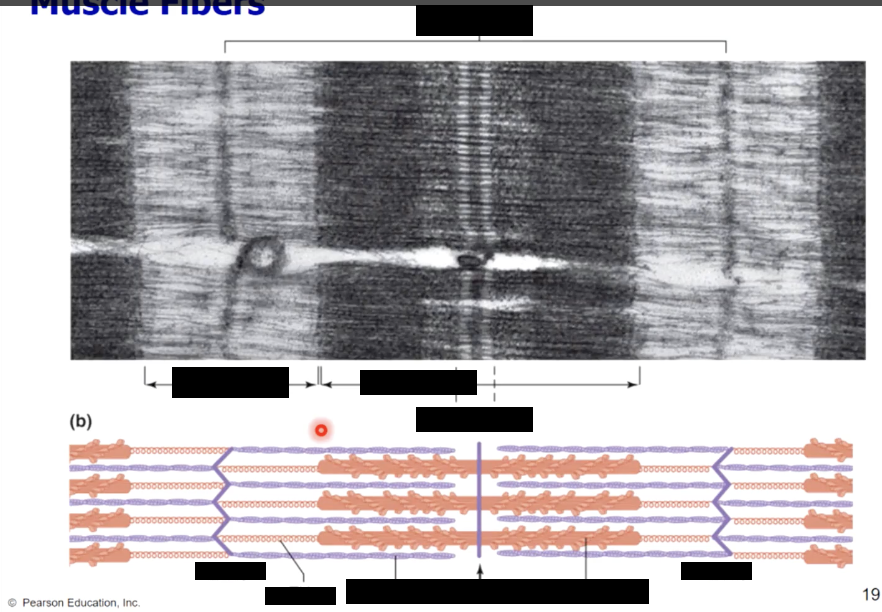
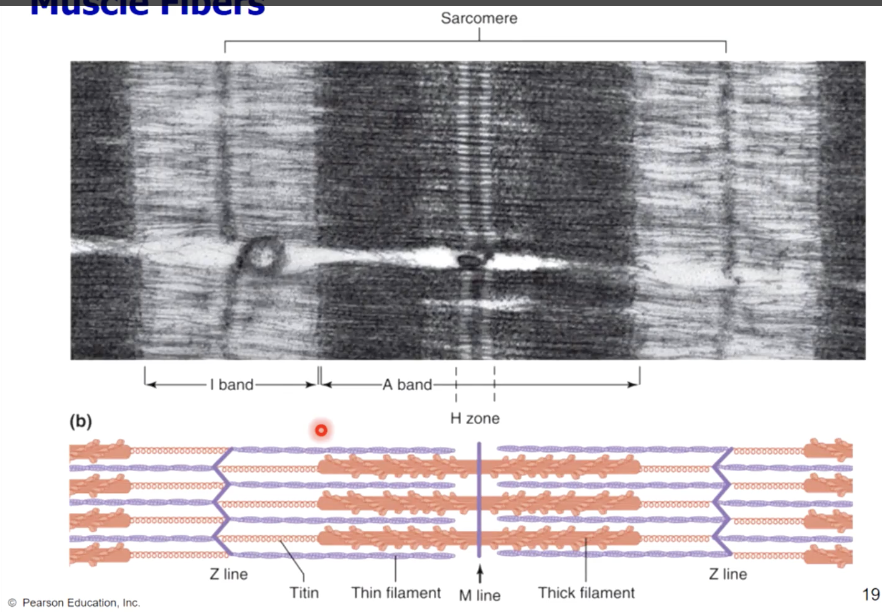
sarcoplasmic recticulem
sarcolemma - plasma membrane of the muscle fiber, has an intricate system of penetrating T - tubules that connect to a specialized smooth ER called sarcoplasmic reticulum (SR)
the SR stores and releases calcium ions which are important for muscle contraction
most SR ca2+ bound to calsequestrin protein
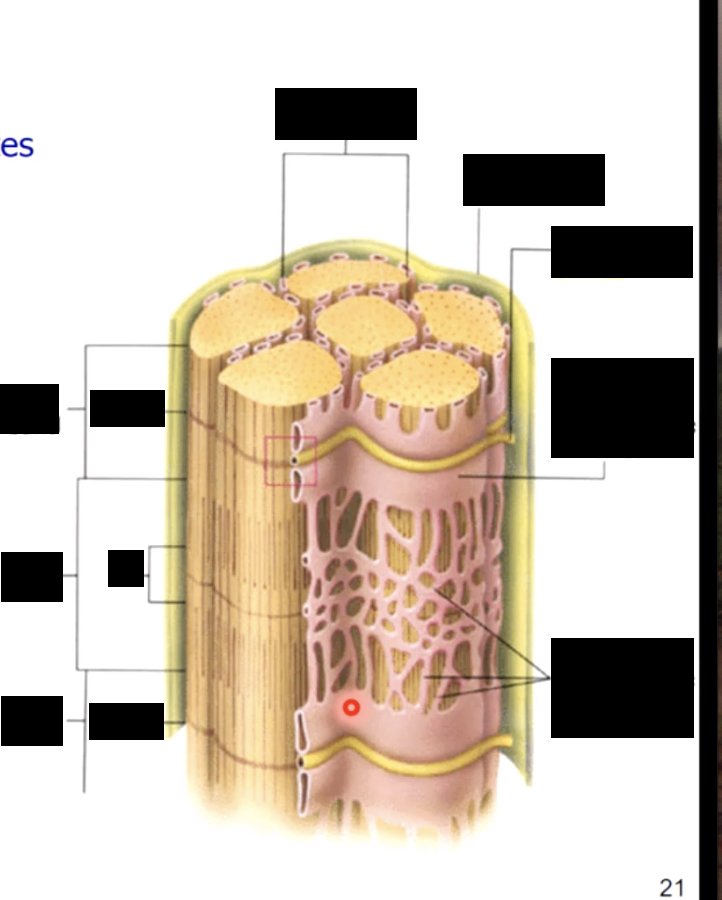
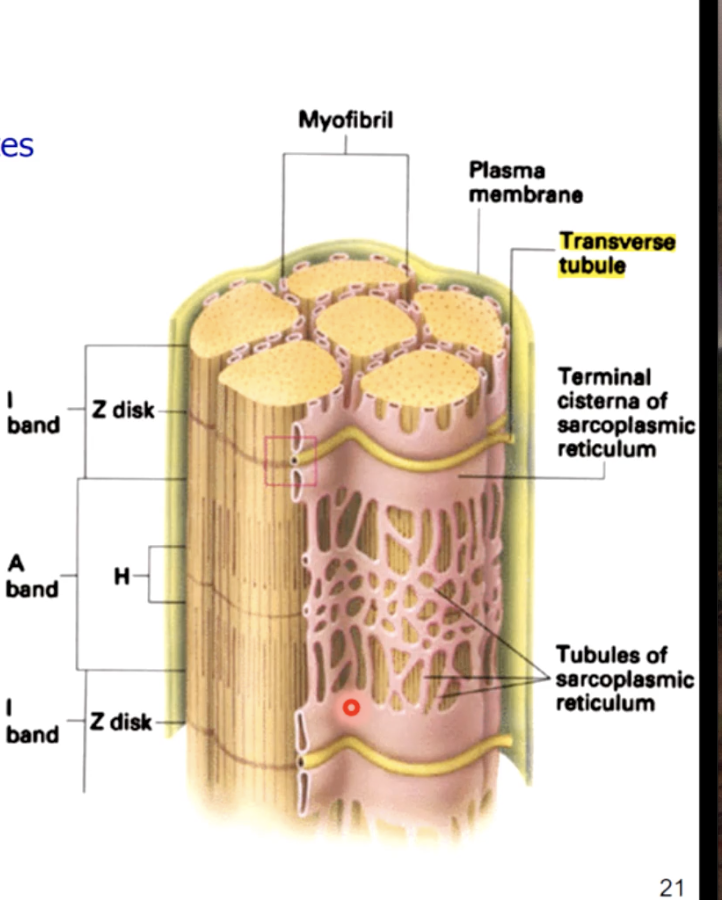
muscle fiber bands/sections
A band - (dark area) corresponds to thick filaments
M line - line of proteins that connect the thick filaments
H zone - lighter region contains no overlap
Zone of overlap - thin filaments protrude between thick filaments
I band - (light area) extends from A band to A band
includes thin filaments, with no overlap with thick filaments
includes Z lines - anchor thin filaments
sarcomere - extends from Z line to Z line
functional unit of the muscle cell
Protein titin anchors thick filaments to Z lines (actin)